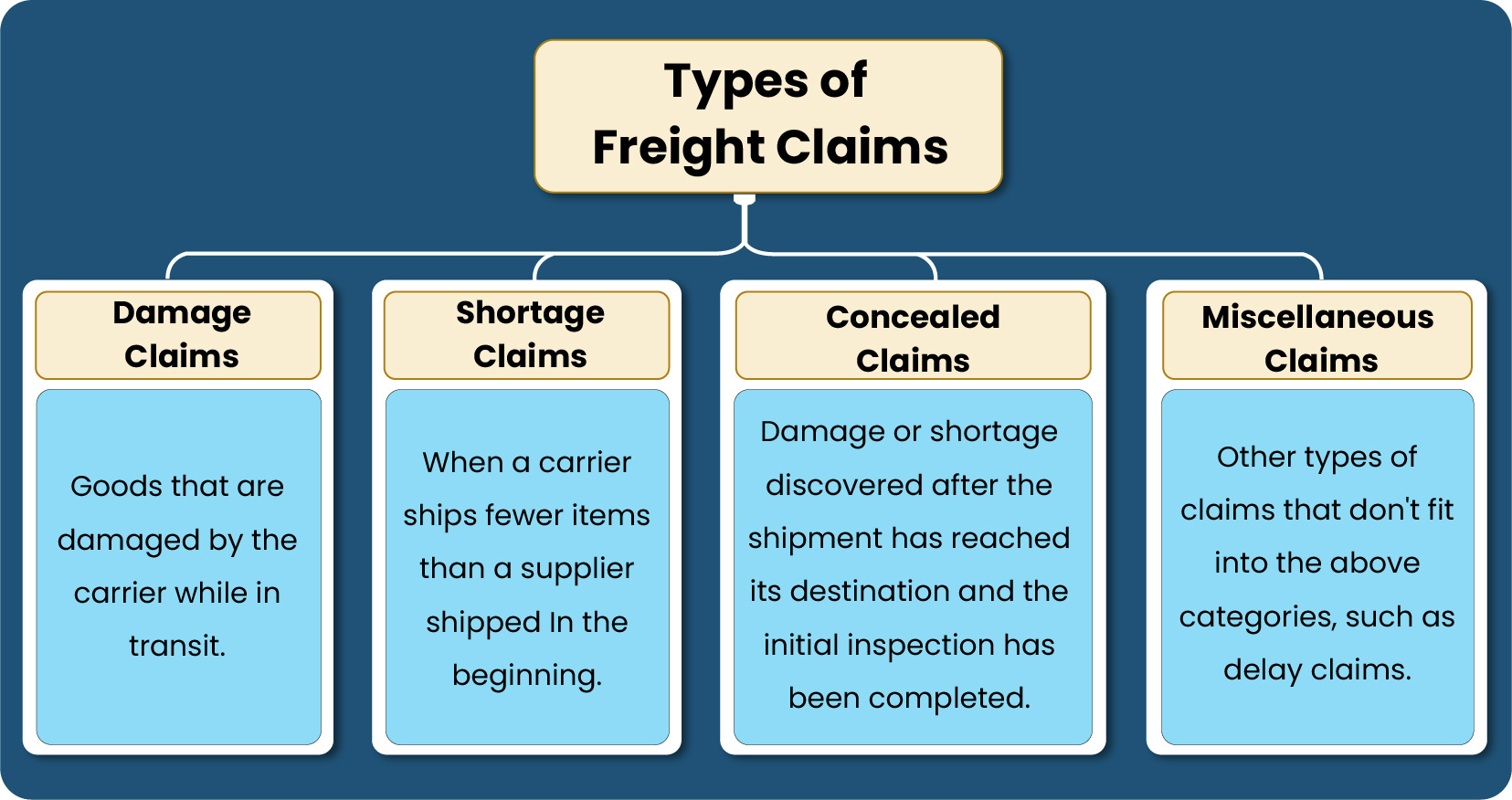
Frequent freight shipments come with the inevitable challenge of goods being damaged or experiencing visible damage. For suppliers sending thousands of shipments each year, the risk is unavoidable. For this reason, disputing every rightful claim and securing compensation for the full claim amount is essential to maintaining business efficiency and financial health.
What is Damaged Freight?
Damaged freight refers to goods that have been harmed, spoiled, or impaired during the process of transportation. This damage can occur due to various reasons such as improper handling, inadequate packaging, accidents, or mishandling during loading and unloading.
What are Freight Damage Claims:
Freight Damage Claims are requests for compensation sent by shippers or consignees to carriers for losses, damages, or other transit issues. These claims are vital for recovering costs from shipping mishaps and ensuring financial stability.
Why Are Freight Damage Claims Important?
Filing freight damage claims helps suppliers recover costs associated with receiving damaged freight, ensuring financial stability by making sure the carrier bears the cost of damages or losses.
Filing freight damage claims ensures compliance with legal and contractual obligations. It establishes documentation of incidents, which can be crucial for legal protection and insurance purposes in case of disputes.
Types of Freight Claims

Common Documents Required to Support Freight Claims
- Bill of Lading (BOL): It's the contract between the shipper and carrier that outlines the shipment and its terms.
- Shipping Invoice: An invoice that provides a detailed list of the shipped items along with their respective values.
- Packing List: A document listing the contents of the shipment.
- Proof of Delivery (POD): A document signed by the receiver confirming the delivery of goods.
- Photo Documentation: Photos or videos showing the condition of the goods upon arrival, particularly useful for damage claims.
Check out our article on how to automatically retrieve these documents from sources like EDI.
Why Freight Claims Are Hard to Handle
- Manual Processes: Entering claim details by hand into carrier portals takes a lot of time and is prone to mistakes. Errors in data entry can cause claim denials or delays. Navigating different carrier portals, like those for FedEx damage claims or UPS freight claims, can be frustrating and lead to errors.
- Tight Deadlines: Carriers like UPS and FedEx have strict deadlines for filing claims. For instance, UPS gives you only 180 business days from the delivery date to file a claim. Missing these deadlines can result in automatic denial of claims, causing financial losses.
- Complex Documentation: Many supporting documents are needed, such as BOLs, invoices, packing lists, and delivery receipts. Each document must be accurately completed and submitted, often within tight deadlines.
- Financial and Operational Impact: Delays in processing freight claims can affect a supplier’s cash flow, as they may need to wait for reimbursement for damaged or lost goods. The time and resources spent on managing freight claims take away from other important tasks, leading to potential disruptions.
Real-World Example of Manual Freight Claim Problems
D&H Distributing faced serious problems with their freight claims. Each month, they had to handle over 3,000 claims. This inefficiency caused many claims to be denied by their original suppliers. They tried hiring more staff, but it only helped a little.
A big challenge was the time needed to file a claim online. It took a long time to gather documents and wait for follow-ups. Tracking numbers had to be managed very carefully to file claims correctly. This manual work often led to delays and mistakes, making things worse. They were nearly out of ideas until they found iNymbus.

Overview of iNymbus Freight Claims Processing Automation
iNymbus uses robotic process automation (RPA) to simplify the freight claims management process, especially with carriers like FedEx and UPS:
- Automated Data Collection: iNymbus automatically gathers all required documents from your systems and carrier portals like FedEx accounts.
- Form Filling: It enters the necessary details into FedEx and UPS claim forms, removing manual effort.
- Document Uploading: iNymbus uploads all essential documents, such as Bills of Lading (BOL) and invoices, to support your claim.
- Tracking and Follow-up: It tracks the status of your claims and follows up as needed, ensuring they are processed and resolved quickly.
How iNymbus Solved D&H’s Freight Claims Problems
iNymbus designed custom solutions to streamline D&H’s freight claims process. Our solution had three main goals:
- Automate Repetitive Actions: We automated tasks that were traditionally performed manually, reducing the need for human intervention.
- Data Review and Validation: We reviewed, validated, and input data from shipping companies such as FedEx and UPS.
- Integration Optimization: We gathered information to identify the best integration points for their systems and solutions.
Results Achieved:
- Increased Efficiency: Automated systems operate continuously without breaks, ensuring consistent and timely processing of claims.
- Scalability: The software can be adjusted to handle increased volumes of claims, allowing businesses to grow without sacrificing performance.
- Resource Allocation: Employees can focus on analytical tasks and process improvements, rather than spending time on repetitive manual work.

